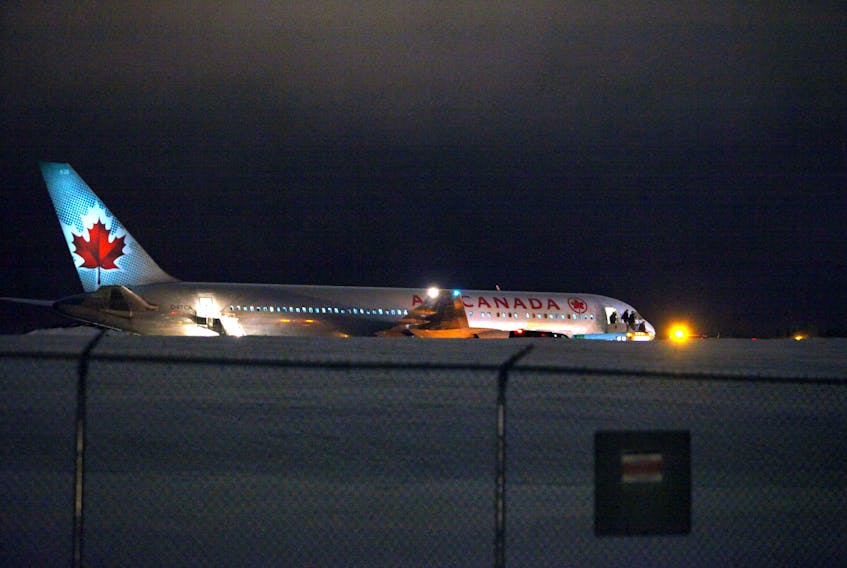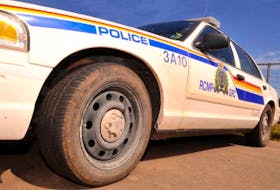A report on a runway incident last March reinforces the need for air crews, airport ground staff and air traffic controllers to be prepared for winter conditions.
An Air Canada Boeing 767 with 211 passengers and eight crew members slid off an icy runway at about 6:30 p.m. on March 4 at the Halifax Stanfield International Airport. Nobody was hurt.
There was no damage to the aircraft but the passengers were shuttled to the terminal on airport park-and-ride buses. The 767 was eventually towed to a gate after being released by TSB investigators.
The Transportation Safety Board released its report on the incident Wednesday.
The report didn’t contain specific recommendations but investigators focused on communication issues, such as the electronic systems that monitor weather and runway conditions, as well as verbal exchanges between air traffic controllers and air crews.
For example, the crew of an Embraer jet that landed before the Air Canada aircraft reported that their ability to brake the plane on the icy runway was “very poor” to the Halifax air traffic controllers.
The controllers did not pass along that characterization to the Air Canada crew.
“Before landing, the crew involved in the occurrence had been informed that the runway was very slippery, and that an aircraft that had just landed was barely able to stop by the end of the runway,” the report states.
“Therefore, the crew prepared to apply aggressive deceleration early in the landing roll, by using reverse thrust and autobraking, to minimize exposure to the end portion of the runway, which they understood to be very slippery. The aircraft lost deceleration as it passed Taxiway C. As the aircraft was nearing Taxiway B, it was blown sideways on the icy runway, and control of the aircraft was lost.”
A spokesman for the organization that represents air traffic controllers, Nav Canada, said Wednesday that the information reinforces briefings on winter conditions that the organization maintains each year.
“What it signals to Nav in specifically is that they will be giving additional consideration to the factors that were related to what occurred there at the airport,” Brian Boudreau said.
The report also focused on procedures and systems at the airport.
A weather alert system had warned that the runway conditions had changed from “wet” to “ice warning” at 6:07 p.m. (An ice warning means there is a continuous film of ice and water at or below freezing and that the chemical treatment meant to keep it clear wasn’t working.)
At this point, the airport duty manager wasn't available to monitor the conditions, and another staffer, the airfield maintenance supervisor (AMS) was returning from the airfield so the warning on changing conditions wasn't noticed.
The report said the airport authority has implemented a mandatory briefing checklist in writing effective for the next winter season “to ensure that the outgoing AMS properly briefs the incoming AMS during shift changeovers in inclement weather.”
The airport also has upgraded its runway weather information system to double the number of sensors.
Authority spokeswoman Tiffany Chase said that system upgrade had been planned before the March 4 incident.
The improvements will also ensure information on runway and weather conditions is passed along more quickly to the airport duty manager's mobile device.
Chase noted weather conditions were “very challenging” on the day of the incident.
“So the best information that we have is put into the runway surface condition reports and those are provided to the tower as one piece of data, that is then released to the air crews that day.”
She said the safety of our passengers and employees is the authority’s main priority.
Besides participating in the TSB’s investigation, “we took the opportunity through our own review of this incident to enhance our process (such as) reporting on runway surface conditions during weather events.”
RELATED:









